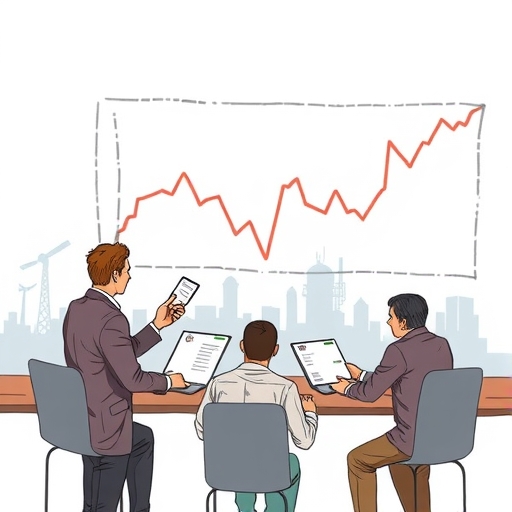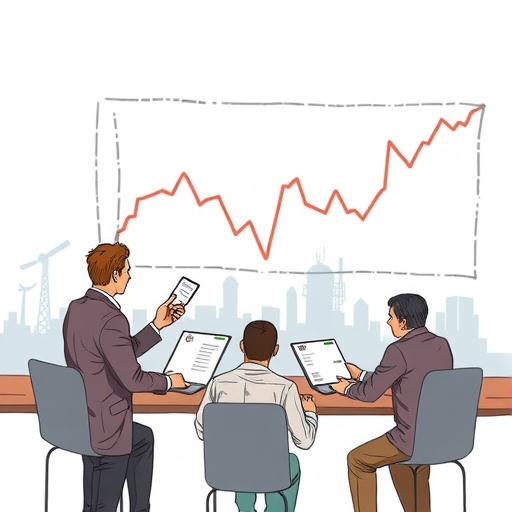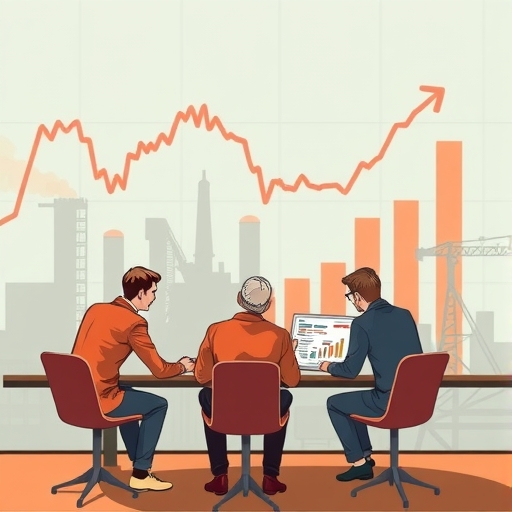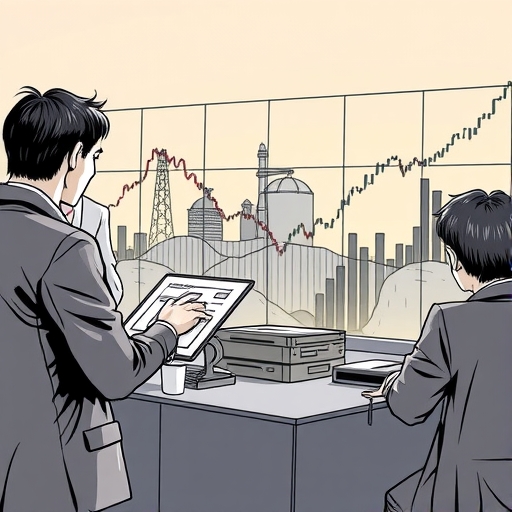
War Assets: Understanding Their Impact on Global Markets and Investment Strategies
When we think about global conflicts and market reactions, a term that surfaces, sometimes misunderstood, is ‘war assets’. Forget, for a moment, the strategy points or resources you might gather in a video game to fight off fictional threats. While that’s one context, it’s not the one that keeps investors and policymakers awake at night.
In the real world, ‘war assets’ take on a far more tangible and impactful meaning for investors like you. These aren’t just tanks or troops; they are strategic resources, critical infrastructure, and even entire industries whose value, vulnerability, or demand shifts dramatically during times of conflict and heightened geopolitical tension.
Recently, we’ve seen a sharp, unsettling escalation in the Middle East, moving beyond the familiar, albeit dangerous, dynamics of proxy conflicts into direct state-on-state engagement. This shift immediately unsettled global markets and brought the concept of real-world ‘war assets’ into stark focus.
- War assets affect global market stability.
- They include energy supplies, infrastructure, and strategic industries.
- Global conflicts can shift how these assets are valued and managed.
In the coming sections, we will explore what constitutes these real-world ‘war assets’ from an economic and investment perspective, how geopolitical tensions directly impact their value and related financial markets, and what this means for your investment strategy in a world where stability seems increasingly fragile.

We’ll delve into specific examples, analyze market reactions, and discuss how factors ranging from energy infrastructure to national debt play a crucial role in determining economic outcomes during conflict. Our goal is to provide you with a clearer understanding, like a seasoned teacher guiding you through a complex subject, of how these critical assets influence your financial landscape.
Table of Contents
ToggleGeopolitical Risk: When Proxies Become Direct Threats
For years, the friction between Israel and Iran has simmered, often playing out through proxy conflicts involving groups like Hezbollah, Hamas, and the Houthis. These indirect confrontations, while tragic and destabilizing regionally, allowed for a certain level of containment, limiting the direct geopolitical risk between the two states.
However, the recent shift marks a dangerous new phase: direct confrontation. When states move from supporting proxies to launching strikes directly against each other, the fundamental level of geopolitical risk escalates dramatically. This isn’t just a regional issue anymore; it has global implications.
| Geopolitical Tension | Impact on Investors |
|---|---|
| Direct state conflicts | Increased market volatility |
| Proxy wars | Localized risks |
| Nuclear threats | Heightened geopolitical anxiety |
Consider Israel’s stated primary objective behind certain actions: neutralizing Iran’s nuclear weapons program. This is seen by Israel as an immediate operational necessity, pushing the conflict’s rationale beyond territorial disputes or proxy skirmishes and into existential threats. This kind of rationale inherently raises the stakes exponentially.
From an investor’s perspective, this escalation means that tail risks suddenly become much fatter. The probability of unforeseen, high-impact events increases significantly. We move from worrying about localized instability to contemplating scenarios with wider international involvement and potentially severe economic fallout.
Understanding this shift from proxy wars to direct state conflict is the first step in appreciating the current market dynamics. It justifies the immediate, often sharp, reactions we see in asset classes traditionally sensitive to geopolitical tensions.
Energy Infrastructure: The Economic Arteries of Conflict
In any significant conflict involving energy-producing nations, energy infrastructure quickly becomes a primary target. Think of oil fields, refineries, pipelines, and critical gas processing plants as essential ‘war assets’ – not for fighting, but for funding and sustaining the conflict, or conversely, for crippling the adversary.
Iran, heavily reliant on energy exports for its economy, possesses significant, albeit vulnerable, energy assets. We’re talking about facilities like the South Pars Gas Field, which it shares with Qatar (where it’s known as the North Dome), and vital oil refineries. These aren’t just industrial sites; they are the lifeblood of the Iranian economy.
Targeting such infrastructure has dual strategic purposes: it aims to reduce the adversary’s ability to fund its military and operations through lost export revenue, and it creates domestic pressure by potentially disrupting energy supply within the country.
| Energy Infrastructure | Strategic Importance |
|---|---|
| South Pars Gas Field | Economic lifeline |
| Oil Refineries | Critical for export revenue |
| Pipelines | Essential for supply |
From an economic standpoint, attacks on or threats to these facilities introduce immediate supply-side risk to global energy markets. Any disruption to Iran’s oil or gas production capacity, or its ability to process and export these resources, can send shockwaves through global prices.
For you, as an investor, recognizing energy infrastructure as a critical ‘war asset’ means understanding that geopolitical tensions in energy-rich regions have a direct, measurable impact on the price of commodities like oil and natural gas, and subsequently, on the performance of energy sector stocks and ETFs like the Energy Select Sector SPDR ETF (XLE).
The Strait of Hormuz: Where Global Energy Security Hinges
Beyond fixed infrastructure, geography itself can be a ‘war asset’ or, in this case, a critical liability and chokepoint. The Strait of Hormuz is arguably the most significant example globally, nestled between Iran and Oman, connecting the Persian Gulf to the Arabian Sea.
Consider these numbers: roughly 20% of the world’s total petroleum liquid volume, and a staggering 90% of Iran’s oil exports, pass through this narrow waterway, which is only about 21 miles wide at its narrowest point. It is, quite literally, the main artery for a significant portion of global energy supply.
Iran has repeatedly threatened to close the Strait in response to perceived threats or sanctions. While actually achieving a complete, sustained closure against international naval power would be incredibly difficult, even the *threat* of disruption is enough to send global oil prices skyrocketing.

Why? Because any significant impediment to shipping through the Strait of Hormuz wouldn’t just impact Iran’s exports; it would disrupt supplies from major producers like Saudi Arabia, the UAE, Kuwait, and Iraq, all of whom rely on the Strait to get their oil to global markets. This could lead to a severe global energy crisis.
Understanding the strategic vulnerability and economic leverage associated with the Strait of Hormuz is crucial. It highlights how geographical ‘war assets’ can hold immense power and represent a major source of geopolitical risk for the global economy and financial markets.
Initial Market Signals: Gold, Oil, and the Predictable Safe Havens
When geopolitical tensions flare, financial markets react instantly. Among the most predictable responses is a surge in traditional ‘safe haven’ assets. For investors like you and me, this often means looking at gold and oil.
Why gold? For centuries, gold has been considered a store of value, especially in times of uncertainty or economic turmoil. It’s seen as a tangible asset that is less susceptible to the volatility of currencies or the performance of companies during crises. When headlines scream about conflict, investors tend to move money into assets perceived as preserving capital, and gold sits at the top of that list.
The recent conflict escalation saw gold prices rally significantly, reflecting this classic flight-to-safety behavior. It’s a clear signal from the market that geopolitical risk has risen and investors are seeking refuge.
| Safe Haven Asset | Reason for Demand |
|---|---|
| Gold | Store of value during uncertainty |
| Oil | Supply concerns during conflict |
| U.S. Treasuries | Perceived safety of U.S. debt |
Oil’s reaction is equally logical, though driven by supply concerns rather than inherent safety. As we discussed, conflicts in energy-rich regions, particularly involving major producers like Iran and impacting critical chokepoints like the Strait of Hormuz, create immediate fears of supply disruptions. Reduced supply, or even the *threat* of reduced supply, against relatively stable demand, pushes prices higher.
The surge in crude oil prices, mirroring the spike in gold, confirms the market’s immediate assessment: the geopolitical situation poses a significant threat to global energy stability and supply, making oil a highly sensitive ‘war asset’ in this context.
These reactions in gold and oil are textbook examples of how traditional safe havens perform when geopolitical risk is perceived to be rising. They are often the first, most visible market signals of increased tension.
The Defense Sector: Benefiting from Heightened Global Tensions
While gold and oil represent traditional safe havens sought *during* uncertainty, other sectors directly benefit from increased military activity and defense budgets. Here, we see the rise of defense and aerospace stocks and related ETFs as direct ‘war assets’ in a financial portfolio sense.
Companies that manufacture aircraft, missile systems, cybersecurity solutions for military applications, and other defense technologies often see increased demand or future contract prospects when global tensions are high or conflicts erupt. Governments tend to increase defense spending, restock arsenals, and accelerate modernization programs in response to perceived threats.

The escalation in the Middle East, coupled with ongoing conflicts elsewhere in the world (like Ukraine), creates a favorable business environment for the defense industry. This isn’t just about active conflict; it’s also about preparation, deterrence, and maintaining military readiness.
| Defense Sector Benefit | Impact on Investors |
|---|---|
| Increased military contracts | Potential for higher stock prices |
| Defense spending growth | Target for sector-specific investments |
| New technologies | Future market demand |
You might track sector-specific ETFs like the iShares U.S. Aerospace & Defense ETF (ITA) to see this trend in action. These funds hold baskets of stocks in companies heavily involved in the defense and aerospace sectors. Their performance often correlates positively with rising geopolitical risk and increased global military spending.
Investing in defense stocks or ETFs in such times is not typically considered a ‘safe haven’ in the traditional sense (they are equities, subject to broader market risks), but rather a strategic play based on anticipated increased demand for military ‘war assets’. It’s a sector that benefits directly from instability, a somber reality of the investment world.
A Divergent Signal: US Dollar, Treasuries, and the Shadow of Debt
Now, here’s where the market signals become a little more complex and, perhaps, concerning for traditional investors. Historically, the US dollar and long-dated US Treasuries have also been considered premier ‘safe haven’ assets. The US dollar is the world’s reserve currency, and US government debt is often seen as one of the safest investments globally, especially during times of crisis.
In theory, when geopolitical risk rises, international investors seeking safety should flock to the US dollar and US Treasuries, driving their value up and yields down (for Treasuries). This is the classic ‘flight to quality’ phenomenon.
However, in the face of this recent Middle East escalation, we observed an unexpected phenomenon: both the US dollar and longer-dated Treasuries experienced a sell-off. This is counter-intuitive behavior for traditional safe havens during a geopolitical crisis of this magnitude.
What explains this counter-intuitive move? Many analysts point not to the geopolitical crisis itself as the primary driver for *these specific assets*, but rather to persistent and growing concerns over the staggering amount of US federal debt. The US national debt has soared, exceeding $37 trillion, fueled by years of deficits.
This ‘One Big Beautiful Bill,’ as some colorfully call the ballooning national debt, is a major pre-existing concern for many large fund managers and institutional investors. They worry about the long-term implications of this debt load, including potential inflationary pressures if the Federal Reserve has to monetize the debt, or the sheer burden of interest payments on the government’s finances.
In this instance, the market signal seems to be that for some critical ‘safe haven’ assets like the dollar and Treasuries, the gravitational pull of domestic fiscal concerns (debt) is currently outweighing the traditional push from external geopolitical risks. This is a significant shift in market dynamics that you, as an investor, need to understand.
National Strategic Assets: Pillars of Strength in a Volatile World
Beyond the immediate market reactions to conflict, it’s important to consider how a nation’s underlying strategic assets influence its resilience and capability during times of heightened geopolitical risk. For the United States, two such ‘war assets’ stand out prominently: domestic energy independence and a robust defense industrial base.
The shale revolution fundamentally changed the energy landscape for the US. What was once a significant importer of oil is now a major producer, even an exporter. This domestic energy independence acts as a crucial strategic ‘war asset’. It insulates the US economy to a significant degree from the direct impact of supply disruptions in volatile regions like the Middle East, unlike many other nations that remain heavily reliant on imported energy.
This energy security provides the US with greater flexibility and leverage in its foreign policy and military decision-making. While global oil prices still affect US consumers and businesses, the nation’s fundamental energy security is significantly enhanced compared to decades past.
Coupled with this energy security is the unparalleled strength and scale of the US defense industry. This isn’t just about having advanced military technology; it’s about the capacity to research, develop, manufacture, and rapidly deploy military assets. This industrial base is a strategic ‘war asset’ in itself, ensuring the US can project power and sustain military operations if necessary.
| National Asset | Strategic Role |
|---|---|
| Energy Independence | Mitigates supply chain vulnerabilities |
| Defense Industrial Base | Supports military readiness and response |
These two factors – energy independence and a powerful defense industry – are often cited as core pillars of US economic and strategic strength. They represent national ‘war assets’ that influence not just the country’s ability to respond to conflict but also how global geopolitical risks are perceived and priced by markets in relation to the US economy.
Investor Strategy: Navigating Portfolios Through Geopolitical Crosscurrents
For you, the investor, the key takeaway from all this isn’t just understanding the ‘war assets’ in play, but knowing how to navigate your portfolio through these turbulent geopolitical crosscurrents. Geopolitical risk introduces uncertainty, which markets dislike, but it also creates specific trends and opportunities.
Technical analysis remains a powerful tool in such times. Price charts reflect collective market sentiment and can often provide earlier signals than fundamental news. Watching the price action and volume in key commodities like oil and gold, or in sector-specific ETFs like ITA and XLE, can help you identify if the market is confirming or contradicting the geopolitical headlines.
Considering these dynamics, how might you position yourself? Diversification across asset classes and geographies remains paramount. A well-diversified portfolio is naturally more resilient to shocks emanating from a single region or sector.
If you’re interested in exploring opportunities in global markets, including potential hedges or plays related to energy and defense sectors, understanding the platforms available to you is crucial.
If you’re considering starting out in forex trading or exploring a wider range of CFD instruments that allow you to trade on the price movements of commodities, indices, or even specific stocks like those in the defense sector without owning the underlying asset, then Moneta Markets is a platform worth considering. Based in Australia, it offers over 1000 financial instruments, suitable for both beginners and experienced traders.
Technical indicators like moving averages, RSI, and volume analysis can help you identify trends and potential entry/exit points in volatile markets influenced by news events. For example, tracking the trading volume on defense ETFs like ITA during periods of rising tension could provide clues about institutional accumulation.
Moreover, selecting a trading platform with robust tools and reliable execution is non-negotiable in volatile environments. You need a platform that can handle rapid price movements and execute your trades efficiently.
When choosing a trading platform, Moneta Markets‘ flexibility and technological advantages are worth noting. It supports mainstream platforms like MT4, MT5, and Pro Trader, combining high-speed execution with low spread settings to provide a good trading experience. For global trading with peace of mind, look for brokers with strong regulatory oversight and client fund protection. Moneta Markets holds licenses from regulators like FSCA, ASIC, and FSA, offering features like segregated client funds and 24/7 support, which are important considerations for global traders.
Risk management is non-negotiable. Use stop-losses, manage position sizes, and never invest more than you can afford to lose, especially when trading leveraged products like CFDs. Geopolitical risk is inherently unpredictable; while you can analyze potential impacts on ‘war assets’ and markets, you cannot predict the exact timing or outcome of events.
Beyond the Immediate: Broader Economic Implications
While immediate market reactions are significant, geopolitical conflicts, particularly those involving major energy producers or strategic waterways, have ripple effects that extend far beyond the initial shock. For the global economy, these translate into broader economic implications that investors must consider over the medium to long term.
Inflation is a key concern. A sustained rise in energy prices due to supply disruptions (like a choked Strait of Hormuz) feeds directly into transportation costs, manufacturing expenses, and ultimately, consumer prices. This can exacerbate existing inflationary pressures or reignite them after periods of moderation.
Supply chain disruptions are another potential consequence. Conflict can directly impact shipping routes, insurance costs, and the availability of goods. Even if not directly targeted, trade through or near conflict zones becomes riskier and more expensive, potentially leading to delays, shortages, and higher prices for a wide range of products.
Increased defense spending by nations around the world, while benefiting the defense industry, represents a significant allocation of resources that could otherwise be used for domestic infrastructure, social programs, or tax cuts. This can have long-term implications for national budgets and economic growth profiles.
| Broader Economic Implication | Potential Impact |
|---|---|
| Inflation due to energy prices | Higher consumer prices |
| Supply chain disruptions | Increased costs and delays |
| Increased global defense spending | Resource allocation away from social programs |
Geopolitical tensions can also accelerate shifts in global alliances, trade patterns, and investment flows. Nations may seek to de-risk their supply chains away from potentially unstable regions or adversaries, leading to structural changes in global trade over time.
Understanding these broader implications – the potential for sustained inflation, supply chain fragility, and shifts in global economic relationships – adds another layer of complexity for investors. It highlights how geopolitical ‘war assets’ and conflicts don’t just create short-term volatility but can reshape the economic landscape for years to come.
Conclusion: The Intertwined Fate of Geopolitics and Finance
As we’ve explored, the concept of ‘war assets’ in the real world is complex, encompassing not just military might but critical economic infrastructure, strategic geography, national economic resilience, and even specific industries that benefit from conflict.
The recent escalation in the Israel-Iran conflict serves as a potent reminder of how quickly geopolitical risks can translate into tangible impacts on financial markets. We saw predictable reactions in traditional safe havens like gold and in commodities like oil, driven by fears of supply disruption and a flight to perceived safety.
We also observed the direct benefit to sectors involved in manufacturing military ‘war assets’, with defense and aerospace stocks seeing increased investor interest based on expectations of higher spending and demand.
Crucially, we examined the divergent behavior of assets like the US dollar and long-dated Treasuries, highlighting how significant underlying macro concerns, such as the burgeoning US federal debt, can sometimes override the traditional safe-haven impulse even during periods of heightened global tension.
Navigating this landscape requires a nuanced understanding – recognizing predictable reactions in commodities and defense, while also being aware of how larger macro factors, like national debt, can introduce unexpected twists in the behavior of traditional safe havens. It demands an awareness of both the immediate triggers and the deeper economic currents at play.
Ultimately, for you as an investor, staying informed about global geopolitical dynamics and understanding how various ‘war assets’ influence economic stability and market movements is not just about tracking headlines; it’s an essential part of building a resilient and informed investment strategy in the 21st century. By combining this understanding with sound analytical tools and prudent risk management, you can better prepare yourself to navigate the inevitable volatility that accompanies a world grappling with complex and evolving geopolitical realities.
war assetsFAQ
Q:What are ‘war assets’ in the context of investing?
A:‘War assets’ refer to strategic resources and critical industries influenced by geopolitical conflicts, impacting their market value.
Q:How do geopolitical tensions affect energy prices?
A:Conflicts can disrupt supply chains and infrastructures, leading to increased energy prices and market volatility.
Q:What should investors focus on during geopolitical crises?
A:Investors should analyze safe havens, geopolitical risks, and potential sectors benefiting from increased defense spending.
You may also like
Calendar
| 一 | 二 | 三 | 四 | 五 | 六 | 日 |
|---|---|---|---|---|---|---|
| 1 | 2 | 3 | 4 | 5 | 6 | 7 |
| 8 | 9 | 10 | 11 | 12 | 13 | 14 |
| 15 | 16 | 17 | 18 | 19 | 20 | 21 |
| 22 | 23 | 24 | 25 | 26 | 27 | 28 |
| 29 | 30 | 31 | ||||
發佈留言
很抱歉,必須登入網站才能發佈留言。